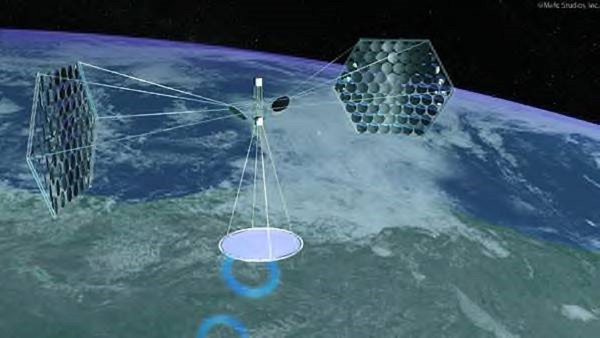A Monday story in Xinhau reports that Chinese scientists are expressing interest in building a solar power station in space to capture energy from the sun and beam it back to Earth. The Chinese are interested in alternatives to fossil fuels which cause pollution, a scourge that afflicts Chinese cities. The SPS would in no way be an immediate solution to that problem. The first experimental model would not be aloft until 2030 with a commercial station deployed in 2050.
The idea for space-based solar power stations have been around since the late 1960s and was mulled as an economic driver for space settlements by the late Gerard K. O’Neill in his now classic book, “The High Frontier.” These kinds of stations would be so huge – the Chinese are estimating that they would weigh 10,000 tons and have solar panels that would be five to six square kilometers. Thus, they would likely be built from space-based materials, from the moon or an asteroid.
More recently the Japanese achieved a breakthrough in wireless power transmission, a crucial technology that would make such power stations work. However, the main impediment is the high startup costs. Even using space-based materials, a huge infrastructure would have to be set up to mine the moon and asteroids, build parts of the solar power stations from the mined materials, and then assemble them in space.
Despite the inherent problems involved with space-based solar power, the story suggests that the Chinese are thinking seriously how space resources can be of economic and environmental benefit. China is the third country to send people into space and has orbited and landed on the moon with robots. It is planning a space station and eventual crewed lunar landings. In short, China has a plan to use space to enhance its power and is slowly but steadily moving to executive that plan without any of the angst over budgets and direction that plagues western space programs.















